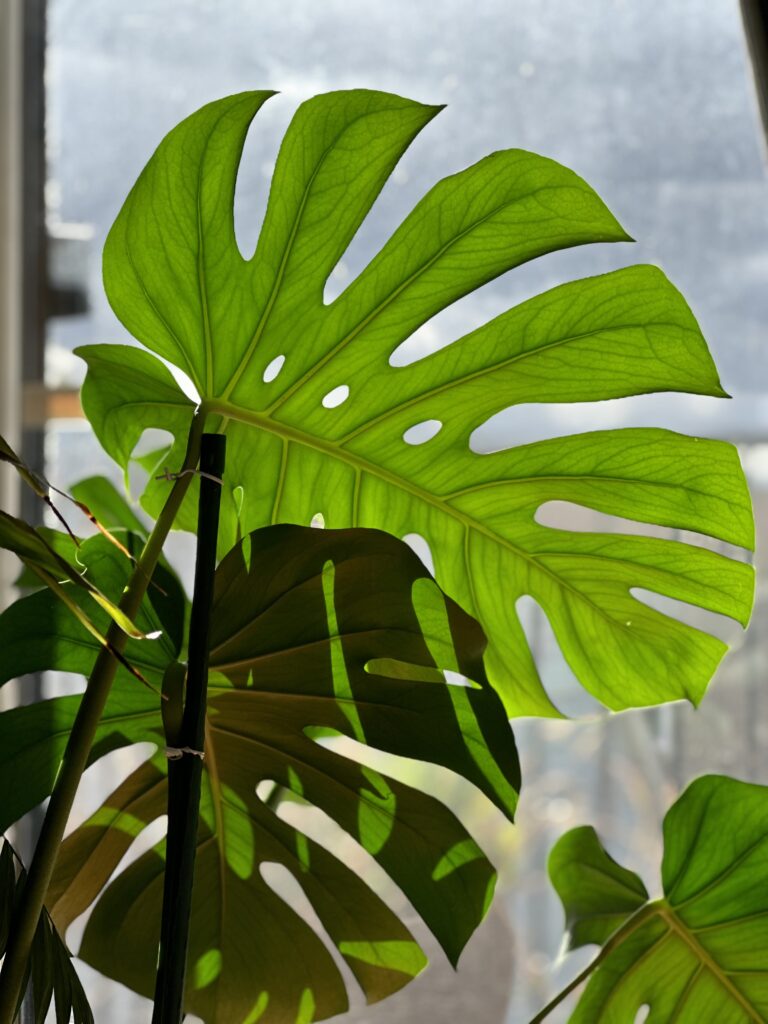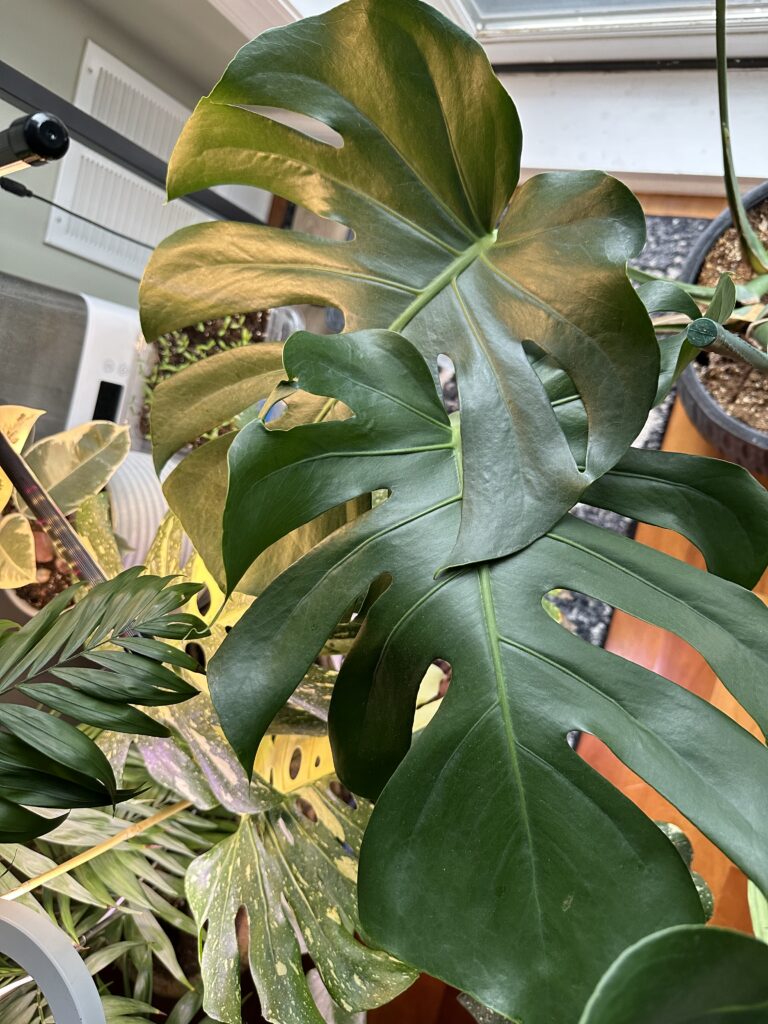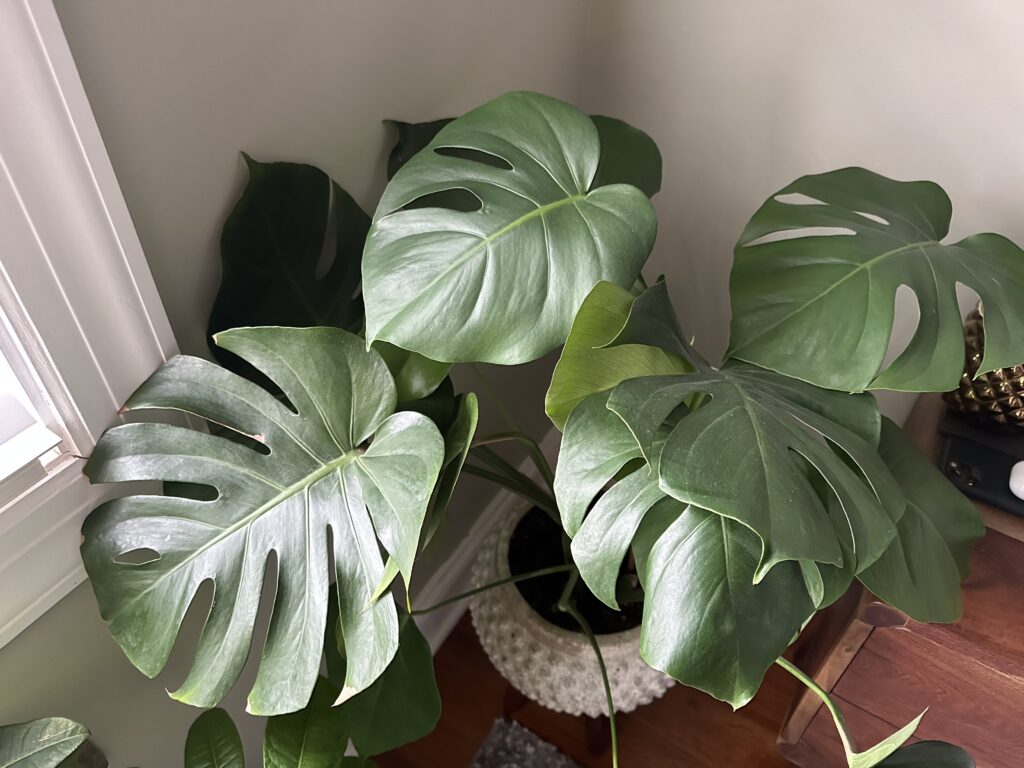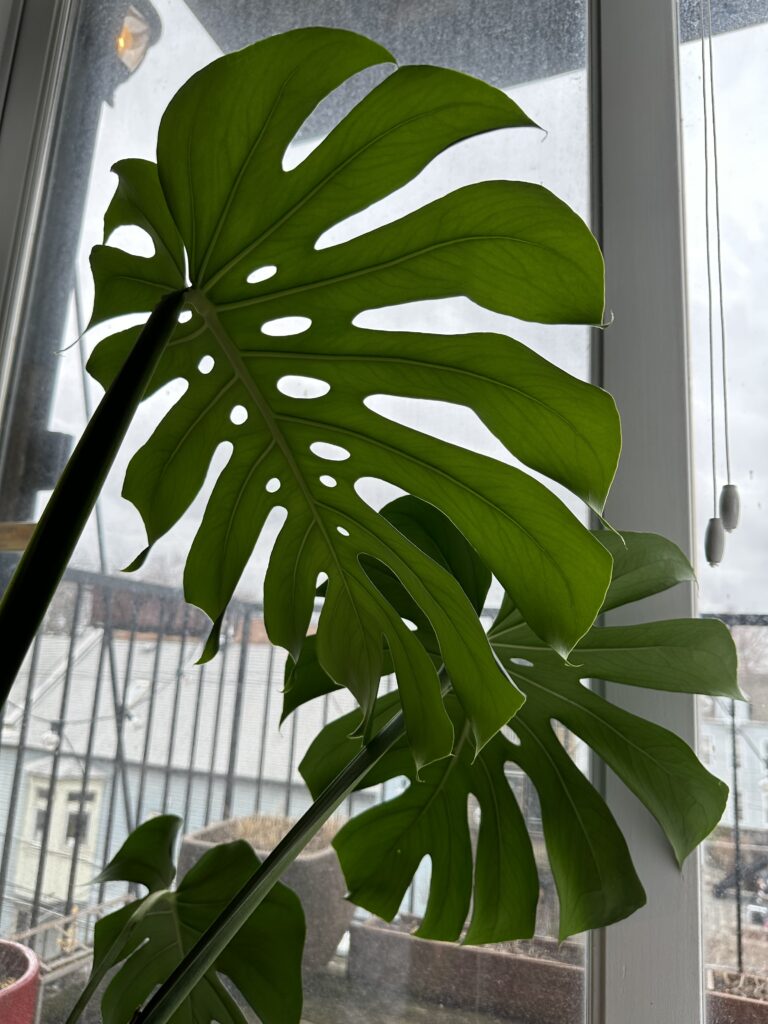The classic Monstera Deliciosa is known both for its beauty and its easy-going nature. Its signature leaf fenestrations are beautiful and elaborate cut patterns that make its iconic leaf outline only appear with perfect growing conditions. Lighting plays one of the biggest factors to grow large leaves and develop complex fenestration patterns. These plants can only reach their full potential with a full understanding of the Monstera Deliciosa lighting needs.
What is a Monstera Deliciosa Plant
The Monstera Deliciosa is a readily available houseplant that can be found in nurseries, big-box retailers and even grocery stores. Their easy requirements and incredibly forgiving nature make them incredibly popular as starter plants for those looking to start a plant collection.
Small Monstera plants resemble philodendrons as compact vining foliage, but mature Monstera Deliciosa plants have dark green leaves can get 1 to 3 feet in length, while developing the plant’s signature fenestrations: beautiful cutouts that allow wind to easily pass through and light to reach lower levels of the plant.
There are other variants of the Monstera, like the Monstera Thai Constellation or Monstera Albo that have unique leaf patterns, compared to the Deliciosa’s all-green beauty. These plants have slightly more challenging lighting needs, and are usually much more expensive due to their difficulty to produce.
Do Monstera Deliciosa plants have special lighting needs?

Like so many tropical houseplants, the Monstera Deliciosa can live in a majority of homes. Their all-green leaves are efficient at converting solar energy to plant energy, and they can tolerate medium light and thrive in bright indirect light.
For Monsteras grown indoors, giving them as much light as possible will maximize their potential. Ample lighting will ensure that your plant will grow lush new leaves, and that fenestration patterns develop when the plant is mature enough.
Does window placement matter for Monstera lighting?
Different windows will expose your plants to varying levels of sunlight throughout the day. For the northern hemisphere, Monstera plants will do best with hours of stronger light provided by windows with southern or western exposures.
If you can only provide your plant with northern or eastern views, this isn’t a dealbreaker. Nearby lamps or dedicated grow lights can help give your plant hours of full-spectrum light to help your Monstera Deliciosa thrive.
Monstera growth with bright indirect lighting
As long as your Monstera is grown indoors, it can take as much sunlight as you can provide. With 6 – 12 hours of strong western or southern exposure, your plant has the potential to quickly grow into a large and beautiful plant.
With maximum light, your plant will develop large new leaves with fenestrations – the finger-like patterns seen in older leaves. With enough light, your plant will also create internal fenestrations, which are the circular cutouts between the primary fenestrations. All fenestrations require more mature plants, and leaves about 9” – 12” inches to develop, usually around the 7th or 8th leaf for newer plants.
Even if you have a new plant, providing enough light from the start will make your plant grow as quickly as possible, and ensure you get beautiful leaves once your Monstera reaches maturity.
Maximizing your Monstera Deliciosa lighting becomes more important since any white patterns will not be able to convert light into energy. By making your sure your plant gets hours of optimal lighting, you’ll keep it producing enough energy to send out beautiful new leaves throughout the year.
Monstera growth with medium indirect lighting
Not everyone has access to perfect sun exposures that provide hours of strong solar energy. If your windows don’t provide great sunlight, or you are in an area with cold, gray winters, you should strongly consider grow lights to provide additional energy for your Monstera.
Many of these LED lights are readily available, and come in a variety of formats, from simple LED rings, clamped tube lights, spotlights, or under-cabinet lighting. Look for lights that provide full-spectrum exposure and ideally have timer functionality so you can set them to automatically turn on each day.
While some may be tempted to keep their Monstera in lower-lighting conditions, this may eventually lead to decline. Your Monstera may be able to maintain itself under less than ideal lighting, but new leaves likely will lack any fenestrations, or you may notice no new growth at all.
Can Monsteras be grown in low light rooms?

If your room has low lighting conditions, it might be time to consider another plant instead of a Monstera that can thrive in low-light conditions. Plants like the Monstera Deliciosa may be mistakenly marked to grow in all kinds of lighting conditions, the truth is that these plants will struggle to grow in low lighting.
Monstera Deliciosa stems may get “stringy” as the plant sends out shoots with under-developed leaves desperate to find light. Your plant will also have no chance of developing fenestrated leaves, and instead keep the small, underdeveloped heart-shaped foliage found in younger plants.
So, can Monsteras be grown in low light rooms? Only with the aid of a grow light that can be set on a 12 hour timer, and provides full spectrum exposure.
Signs that Monstera Deliciosa lighting isn’t enough

It may take your plants a few weeks to tell you that its lighting conditions aren’t ideal. Look for prolonged periods of no growth on your plant.
Despite popular belief, Monstera plants can easily grow and produce new leaves during the winter months. If your plant has gone 1-2 months without producing a new leaf, it likely isn’t getting enough energy and is waiting for conditions to improve.
If your plant is producing new leaves, but they are smaller than previous leaves, or the leaves have fewer fenestrations, this is a sign that the plant is getting its basic needs met, but you’re still falling behind on your Monstera’s lighting needs. A grow light would be a quick fix here.
Finally, if you see your plant produce new leaves that are far from your main stem, this is your plant desperately trying to crawl for sunlight. Help your plant immediately! Find a better, sunnier spot, or add in a grow light to nurse your plant back to health.
Healthy Monstera plants have chunky, compact stems with nodes and leaf shoots within 1” – 2” of each other. If your Monstera is starting to look more like a vine, it’s time to help your plant get the light it needs.
Signs that your Monstera is getting enough light

Monsteras will make it clear when they are happy with their lighting. You can expect regular new leaves every 1 – 2 months that always a little larger than the leaf they are replacing. For mature Monsteras, these leaves should be full of beautiful variegation patterns.
Your plant may also start to develop fenestrations if it’s at least a year old. If previous leaves are already fenestrated, new leaves should continue this pattern. Incredibly happy plants will also develop internal fenestrations, the beautiful oval cutouts on one or both sides of the leaf.
Finally, look at your Monstera stem at the base of the plant. Are the nodes close together, or is it starting to get stringy? Happy plants will produce new nodes with petioles and leaves very close together. This is your Monstera’s way of telling you that it is getting plenty of light so it can grow with leaves very close together while still having plenty of energy to produce new leaves.
Key lighting takeaways
While there are a number of factors that go into plant care, perfecting your Monstera Deliciosa lighting is one of the biggest factor impacting the development of your plant. With plenty of light energy, these plants will develop to their best potential and become large, beautiful plants.
